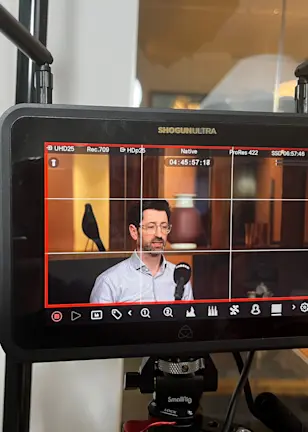Growth in data centers to power AI has boosted demand for copper for cables, along with the silicon chips and semiconductors needed to make the processors. This is producing economic growth that has been lacking elsewhere in traditional manufacturing.
And factors such as the use of commodities as a hedge against inflation, along with the supply and demand dynamics in the wider market, mean that spring is in the air for the usually fickle asset class, says Van der Welle, strategist with Robeco Sustainable Multi-Asset Solutions.
“At last month’s Nvidia technology conference, CEO Jensen Huang envisioned a new industrial revolution taking hold,” he says. “Whereas water was the raw material to generate electricity in the original industrial revolution, electricity is the means of generating data tokens in ‘AI factories’, as Huang calls them, in the 21st century follow-up.”
“With AI adoption broadening, the International Energy Agency (IEA) expects to see a 15% annual growth rate in these data factories in the coming years.”
Shifting to copper cables
“In turn, this is raising demand for copper. Mitigating the risk of power outages, Nvidia recently shifted from optical fibers to copper cables for their data centers, as they are more energy efficient, provide better cooling, and are cheaper.”
Most copper demand traditionally stems from the construction sector, which has been recovering strongly lately, partly spurred by the US Inflation Reduction Act subsidies and tax credits for setting up electric vehicle plants.
He cites three reasons for this new enthusiasm for commodities, and it isn’t just due to AI.
Signs of recovery in manufacturing
“First, the global manufacturing cycle has awoken from its long slumber, with commodities now offering the best risk/reward return potential from a cross-asset perspective,” Van der Welle notes. “Commodities haven’t priced in a fully-fledged rebound in global manufacturing, unlike equities. And the signs of a recovering global manufacturing cycle are getting more promising.”
The global manufacturing Purchasing Managers Index (PMI) and the US Institute for Supply Management (ISM) readings in February both rose above 50, heralding expansion, and an end to a 16-month worldwide industrial recession. Leading indicators for manufacturing purchasing managers’ confidence, such as South Korean semiconductor exports used for AI, had already suggested in mid-2023 that a trough in manufacturing activity was drawing closer.
Not taking the bait
“Yet, whereas equity markets already priced a ’no landing’ scenario, expecting a full recovery of the ISM Manufacturing indicator back to 60, commodity markets haven’t been taking the bait,” Van der Welle continues.
“As commodity markets are spot markets that depend on spot fundamentals, an actual recovery in industrial production leaves more upside for commodities versus equities in terms of performance. Conversely, if the recovery in manufacturing proves to be a false dawn, the downside risk for commodities seems more limited.”
He maintains that while the manufacturing recession has been unusually long, the depth of this recession has been modest, with the ISM never dipping below 45 in the past 16 months. In the past 40 years, after a ‘shallow’ trough in the ISM, commodities have tended to rally by 20% on average in the subsequent year. After the November 2023 trough, commodities returned 5% to date. In contrast, global equities have taken a leap of faith and have already rallied by 20% since then.
The benefit of stalling disinflation
Secondly, there is the prospect of stalling disinflation sustaining demand for commodities as a hedge against the inflation that has bedeviled the world for the past two years. Robeco’s annual outlook for 2024 called for an end to ‘immaculate’ disinflation, as the last mile for central banks to bring inflation back from 3% to 2% often proves to be the toughest.
So far, the signs for this are good. “In the year to date, US inflation has surprised to the upside, with the US Citi inflation surprise index again in positive territory, likely to be followed by its G10 aggregate shortly, in our view,” Van der Welle says.
“Real disposable income growth remained 1.5% above labor productivity as we entered 2024, thereby potentially stalling the disinflationary process in the US.”
“In addition, financial conditions have eased, while money growth has troughed. Positive G10 inflation surprises typically coincide with positive commodity returns. Commodities thus show they are an effective hedge against unexpected inflation, while their current low correlation (0.32) with developed equity markets somewhat mitigates the drawdown risk in case of an equity sell-off.”
Supply-side constraints
Third, constraints on supplies to meet the burgeoning demand are good for prices if they remain in place. “We expect the bottom-up narrative to improve, as supply-side pressures remain present in various commodity markets, with physical tightness likely to emerge in the medium term,” Van der Welle says. “So, the micro-fundamentals are increasingly supportive of a bullish view on commodities.”
“We see continued curbs on oil production from OPEC+ . For metals, mine supply has been lackluster, and continues to see downside risks due to below-trend capex, droughts, tough wage round negotiations in Latin America, and electricity outages in South Africa.”
“Furthermore, supply risks stemming from turbulence around Israel/Iran, the November US elections and a potential Russian summer offensive in Ukraine might also raise the geopolitical risk premiums embedded in commodity prices.”
It’s still a fickle sector
It’s therefore looking positive for commodities, although caution is always advised in this volatile asset class.
“Spring is already in the air for commodity traders, but summer vibes have not yet arrived. There are risks that could pour cold water on the asset class. Future positioning in commodities is elevated, and a hard landing remains a non-negligible risk on a six-to-12 month horizon.”
“As such, the recovery in global industrial activity that is needed to see physical tightness in commodity markets could prove to be flatter than expected.”
最新のインサイトを受け取る
投資に関する最新情報や専門家の分析を盛り込んだニュースレター(英文)を定期的にお届けします。
重要事項
当資料は情報提供を目的として、Robeco Institutional Asset Management B.V.が作成した英文資料、もしくはその英文資料をロベコ・ジャパン株式会社が翻訳したものです。資料中の個別の金融商品の売買の勧誘や推奨等を目的とするものではありません。記載された情報は十分信頼できるものであると考えておりますが、その正確性、完全性を保証するものではありません。意見や見通しはあくまで作成日における弊社の判断に基づくものであり、今後予告なしに変更されることがあります。運用状況、市場動向、意見等は、過去の一時点あるいは過去の一定期間についてのものであり、過去の実績は将来の運用成果を保証または示唆するものではありません。また、記載された投資方針・戦略等は全ての投資家の皆様に適合するとは限りません。当資料は法律、税務、会計面での助言の提供を意図するものではありません。 ご契約に際しては、必要に応じ専門家にご相談の上、最終的なご判断はお客様ご自身でなさるようお願い致します。 運用を行う資産の評価額は、組入有価証券等の価格、金融市場の相場や金利等の変動、及び組入有価証券の発行体の財務状況による信用力等の影響を受けて変動します。また、外貨建資産に投資する場合は為替変動の影響も受けます。運用によって生じた損益は、全て投資家の皆様に帰属します。したがって投資元本や一定の運用成果が保証されているものではなく、投資元本を上回る損失を被ることがあります。弊社が行う金融商品取引業に係る手数料または報酬は、締結される契約の種類や契約資産額により異なるため、当資料において記載せず別途ご提示させて頂く場合があります。具体的な手数料または報酬の金額・計算方法につきましては弊社担当者へお問合せください。 当資料及び記載されている情報、商品に関する権利は弊社に帰属します。したがって、弊社の書面による同意なくしてその全部もしくは一部を複製またはその他の方法で配布することはご遠慮ください。 商号等: ロベコ・ジャパン株式会社 金融商品取引業者 関東財務局長(金商)第2780号 加入協会: 一般社団法人 日本投資顧問業協会


















